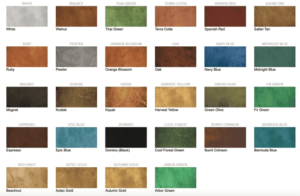
Cork flooring benefits not only enhance the aesthetic appeal of your home but also offer a myriad of practical advantages that make it a standout choice for modern flooring solutions. Made from the bark of cork oak trees, this unique flooring material has a rich history and has gained popularity in recent years due to its impressive sustainability and health benefits.
As homeowners become increasingly conscious of indoor air quality and environmental impact, cork flooring emerges as a champion, providing hypoallergenic properties and excellent noise reduction. From its comfort underfoot to its wide array of designs, cork flooring is transforming how we think about and experience our living spaces.
Introduction to Cork Flooring
Cork flooring is a unique and eco-friendly flooring option made from the bark of the cork oak tree, Quercus suber. This tree, primarily found in Mediterranean regions, naturally sheds its bark every few years, allowing for sustainable harvesting without harming the tree. The bark is processed, granulated, and then combined with adhesives to form tiles or planks. This flooring option has a rich history, tracing back to ancient civilizations that utilized cork for various purposes, including flooring.
In recent years, there has been a resurgence in the popularity of cork flooring as homeowners seek sustainable and practical solutions for their living spaces.
Health Benefits of Cork Flooring
Cork flooring offers numerous health benefits that enhance indoor living environments. One significant advantage is its ability to improve indoor air quality. Unlike many synthetic flooring materials, cork does not emit volatile organic compounds (VOCs), which can contribute to poor air quality. Furthermore, cork is hypoallergenic and resistant to mold and mildew growth, making it an excellent choice for allergy sufferers.
Another notable feature is its acoustic benefits; cork flooring can significantly reduce noise levels in a home, providing a quieter and more peaceful atmosphere.
Environmental Benefits of Cork Flooring
The sustainability of cork flooring is one of its most compelling advantages. The cork harvesting process is renewable, as the bark can be harvested every nine years without damaging the tree, thus allowing it to continue growing and absorbing carbon dioxide. When compared to other flooring materials, such as hardwood or vinyl, cork flooring has a lower ecological impact due to its natural origins and sustainable practices.
Cork flooring also contributes to green living, as it offers energy efficiency benefits by providing natural insulation, which can help reduce heating and cooling costs in the home.
Comfort and Aesthetic Appeal
Walking on cork flooring is often described as comfortable and cushioned, providing a softer feel compared to hard surfaces like tile or hardwood. This comfort level is particularly appreciated in areas where people spend a lot of time on their feet, such as kitchens and living rooms. Cork flooring comes in various styles, colors, and designs, allowing homeowners to choose options that fit their decor.
Whether opting for a classic look or more modern aesthetics, cork flooring can enhance the overall appearance of home improvement projects while adding a unique touch.
Maintenance and Durability
Maintaining cork flooring is relatively straightforward. Regular sweeping and occasional damp mopping can keep the surface clean. It’s essential to use mild cleaning solutions specifically designed for cork to avoid damaging the finish. Common issues with cork flooring may include scratches or water damage, which can be addressed promptly to extend the lifespan of the product. In terms of durability, cork flooring can last between 10 to 30 years, depending on the quality and maintenance, making it a long-lasting option compared to other flooring types.
Installation of Cork Flooring
There are several methods for installing cork flooring, including glue-down, click-lock, and floating installations. Each method has its benefits and can be chosen based on the homeowner’s comfort level and the specific project requirements. For DIY enthusiasts, a step-by-step guide can simplify the installation process, covering essential aspects such as measuring the space, preparing the subfloor, and laying the cork planks or tiles.
Necessary tools include a utility knife, a straightedge, adhesive (if applicable), and a tapping block for click-lock installations.
Cork Flooring in Home Improvement Design

Incorporating cork flooring into various rooms can elevate the overall design and functionality of a home. For instance, using cork in kitchens can add warmth and comfort while being resistant to spills and stains. In bathrooms, cork can provide a slip-resistant surface that remains comfortable underfoot. Cork flooring can complement various interior design themes, from modern minimalism to rustic charm, creating a harmonious environment that aligns with feng shui principles by promoting balance and tranquility within the home.
Cost Considerations

When comparing costs, cork flooring is generally positioned between laminate and solid hardwood options. While the initial investment may be higher than laminate, the long-term value due to durability and maintenance savings makes cork a wise choice. Budget-friendly cork flooring options are available at various retailers, providing opportunities for homeowners to find the right fit for their financial plans without compromising quality.
Cork Flooring and Home Improvement Trends
Current trends in flooring materials show an increasing preference for sustainable and natural products, placing cork flooring at the forefront of these developments. As homeowners lean towards eco-friendly choices, cork flooring is becoming a favored option in modern home improvement projects. Future predictions suggest that with growing awareness of environmental issues, the use of cork flooring in residential homes will continue to rise, solidifying its place as a stylish and sustainable flooring choice.
Epilogue
In conclusion, the benefits of cork flooring extend far beyond just being a stylish addition to your home. With its sustainable sourcing, health-conscious features, and ease of maintenance, cork flooring is a smart investment for anyone looking to improve their living environment. As trends continue to shift towards eco-friendly materials, cork flooring undoubtedly holds a lasting appeal in the world of home improvement.
Common Queries
Is cork flooring suitable for high-moisture areas?
Yes, cork flooring can be used in high-moisture areas like kitchens and bathrooms, with proper sealing to prevent moisture damage.
How often should cork flooring be cleaned?
Cork flooring should be swept regularly and cleaned with a damp mop as needed to maintain its appearance and longevity.
Can cork flooring be installed over existing floors?
Yes, cork flooring can often be installed over existing floors, provided the surface is level, clean, and dry.
Is cork flooring durable?
Cork flooring is quite durable and can last for many years with proper care and maintenance, making it a great long-term investment.
Are there any allergens in cork flooring?
No, cork flooring is hypoallergenic and resistant to mold, making it a safe choice for allergy sufferers.






:max_bytes(150000):strip_icc():focal(739x95:741x97)/Hot-Ones-and-Hot-Pockets-collaboration-to-make-some-spicy-hot-pockets-083023-1-c7cc6bd0f6924a18928ae1f6a5e5bf12.jpg?w=700)